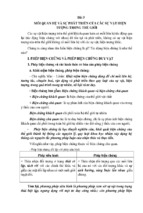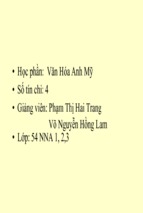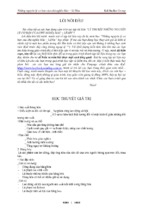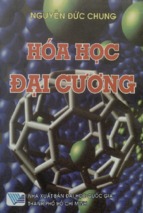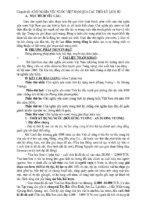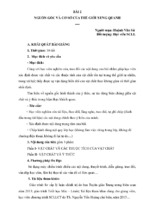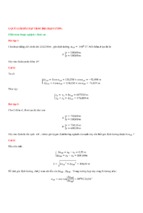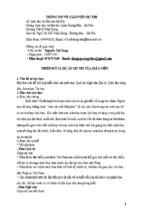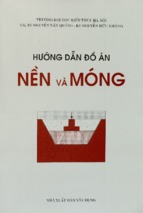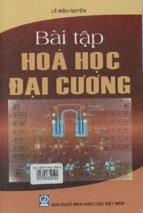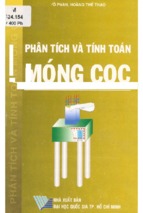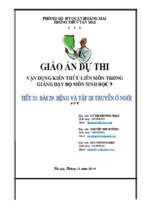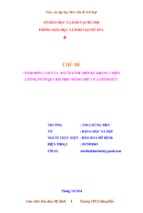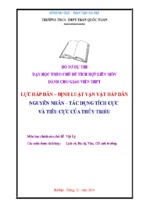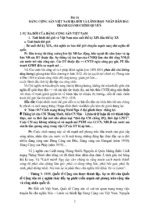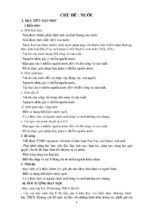Downloaded from ascelibrary.org by RMIT UNIVERSITY LIBRARY on 01/03/19. Copyright ASCE. For personal use only; all rights reserved.
GSP 300
PanAm
Unsaturated Soils
2017
Plenary Papers
Papers from Sessions of the
Second Pan-American Conference
on Unsaturated Soils
Dallas, Texas
November 12–15, 2017
Edited by
Laureano R. Hoyos, Ph.D., P.E.
John S. McCartney, Ph.D., P.E.
Sandra L. Houston, Ph.D., D.GE
William J. Likos, Ph.D.
Downloaded from ascelibrary.org by RMIT UNIVERSITY LIBRARY on 01/03/19. Copyright ASCE. For personal use only; all rights reserved.
GEOTECHNICAL
SPECIAL
PUBLICATION
NO.
300
PANAM UNSATURATED
SOILS 2017
PLENARY PAPERS
SELECTED PAPERS FROM SESSIONS OF THE SECOND
PAN-AMERICAN CONFERENCE ON UNSATURATED SOILS
November 12–15, 2017
Dallas, Texas
SPONSORED BY
International Society of Soil Mechanics and Geotechnical Engineering
The Geo-Institute of the
American Society of Civil Engineers
EDITED BY
Laureano R. Hoyos, Ph.D., P.E.
John S. McCartney, Ph.D., P.E.
Sandra L. Houston, Ph.D., D.GE
William J. Likos, Ph.D.
Published by the American Society of Civil Engineers
Downloaded from ascelibrary.org by RMIT UNIVERSITY LIBRARY on 01/03/19. Copyright ASCE. For personal use only; all rights reserved.
Published by American Society of Civil Engineers
1801 Alexander Bell Drive
Reston, Virginia, 20191-4382
www.asce.org/publications | ascelibrary.org
Any statements expressed in these materials are those of the individual authors and do not
necessarily represent the views of ASCE, which takes no responsibility for any statement
made herein. No reference made in this publication to any specific method, product, process,
or service constitutes or implies an endorsement, recommendation, or warranty thereof by
ASCE. The materials are for general information only and do not represent a standard of
ASCE, nor are they intended as a reference in purchase specifications, contracts, regulations,
statutes, or any other legal document. ASCE makes no representation or warranty of any
kind, whether express or implied, concerning the accuracy, completeness, suitability, or
utility of any information, apparatus, product, or process discussed in this publication, and
assumes no liability therefor. The information contained in these materials should not be used
without first securing competent advice with respect to its suitability for any general or
specific application. Anyone utilizing such information assumes all liability arising from such
use, including but not limited to infringement of any patent or patents.
ASCE and American Society of Civil Engineers—Registered in U.S. Patent and Trademark
Office.
Photocopies and permissions. Permission to photocopy or reproduce material from ASCE
publications can be requested by sending an e-mail to
[email protected] or by locating a
title in ASCE's Civil Engineering Database (http://cedb.asce.org) or ASCE Library
(http://ascelibrary.org) and using the “Permissions” link.
Errata: Errata, if any, can be found at https://doi.org/10.1061/9780784481677
Copyright © 2018 by the American Society of Civil Engineers.
All Rights Reserved.
ISBN 978-0-7844-8167-7 (PDF)
Manufactured in the United States of America.
PanAm Unsaturated Soils 2017 GSP 300
iii
Preface
Downloaded from ascelibrary.org by RMIT UNIVERSITY LIBRARY on 01/03/19. Copyright ASCE. For personal use only; all rights reserved.
The Second Pan-American Conference on Unsaturated Soils (PanAm-UNSAT 2017)
was held in Dallas, Texas, November 12-15, 2017, featuring the latest research
advances and engineering‐practice innovations in the area of Unsaturated
Geotechnics, with a focus on characterization, modeling, design, construction, field
performance and sustainability.
PanAm-UNSAT 2017 follows a now well-established series of regional and
international conferences on Unsaturated Soils, bringing together researchers,
practitioners, students and policy makers from around the world, particularly the
Americas. The conference built upon the success of PanAm-UNSAT 2013 (First PanAmerican Conference on Unsaturated Soils, Cartagena, Colombia), as well as that of
previous conferences on unsaturated soils hosted in the United States, including
UNSAT 2006 (Fourth International Conference on Unsaturated Soils, Carefree,
Arizona) and EXPANSIVE’92 (Seventh International Conference on Expansive
Soils, Dallas, Texas, 1992).
Proceedings of PanAm-UNSAT 2017 have been documented in four Geotechnical
Special Publications (GSP) of ASCE including Volume 1: Plenary Session Papers;
Volume 2: Fundamentals; Volume 3: Applications; and Volume 4: Swell-Shrink and
Tropical Soils.
Current Volume 1 (Plenary Session Papers) consists of three sections:
Section I includes 4 papers documenting the invited Keynote Lectures delivered by
Profs. Delwyn Fredlund, Ning Lu, Bernardo Caicedo and Tacio de Campos,
respectively; and 2 more companion papers documenting the First Distinguished Pan
American Lecture on Unsaturated Soils delivered by Prof. Sandra L. Houston.
Section II includes 6 papers documenting the invited Fredlund Symposium Lectures
delivered by distinguished scholars in honor to the decades-long contribution of Prof.
Delwyn G. Fredlund to the discipline of Unsaturated Geotechnics.
Section III includes 6 more papers documenting the invited State-of-the-Art and
State-of-the-Practice Lectures delivered by distinguished researchers and experienced
practitioners from the region.
Each paper was subject to rigorous technical review and received a minimum of two
positive peer reviews before final acceptance by the conference technical committee.
© ASCE
PanAm Unsaturated Soils 2017 GSP 300
Acknowledgments
Downloaded from ascelibrary.org by RMIT UNIVERSITY LIBRARY on 01/03/19. Copyright ASCE. For personal use only; all rights reserved.
The following individuals deserve special acknowledgment and recognition for their
direct involvement and efforts in making this regional conference a success:
PanAm-UNSAT 2017 Program Committee
Conference Chair: Laureano R. Hoyos, Ph.D., P.E., University of Texas at Arlington
Conference Co-Chair: John S. McCartney, Ph.D., P.E., M.ASCE, University of
California, San Diego
Technical Program Chair: Sandra L. Houston, Ph.D., D.GE, M.ASCE, Arizona
State University
Technical Program Co-Chair: William J. Likos, Ph.D., M.ASCE, University of
Wisconsin, Madison
Local Chair: Marcelo J. Sanchez, Ph.D., Aff.M.ASCE, Texas A&M University
Local Co-Chair: Gerald A. Miller, Ph.D., P.E., M.ASCE, University of Oklahoma
Logistics Coordinator: Majid Ghayoomi, Ph.D., A.M.ASCE, University of New
Hampshire
Sponsorships/Exhibits Chair & Liaison from the G-I Technical Coordination
Council (TCC): Anand J. Puppala, Ph.D., P.E., D.GE, F.ASCE, University of Texas
at Arlington
The Geo-Institute (G-I) of the ASCE
Brad Keelor, Director
Helen Cook, Board and Meetings Specialist
Lucy King, Senior Manager, Conferences
Cristina Charron, Manager, Conferences
Drew Caracciolo, Manager, Sponsorships and Exhibits
Rachel Hobbs, Administrator, Conferences
The conference Program Committee would also like to acknowledge the officers of
the TC106 Committee on Unsaturated Soils (ISSMGE), and all members of the
Technical Advisory and International Technical Committees, who provided guidance
and support during the early planning phases of the conference.
TC106 Committee on Unsaturated Soils (ISSMGE)
David Toll, Chair, University of Durham, UK
Bernardo Caicedo, Vice Chair, Universidad de Los Andes, Bogotá, Colombia
Adrian Russell, Secretary, University of New South Wales, Australia
Technical Advisory Committee
Sai Vanapalli, University of Ottawa, Canada
Greg Siemens, Royal Military College, Canada
Kanthasamy (Muralee) Muraleetharan, University of Oklahoma, USA
© ASCE
iv
PanAm Unsaturated Soils 2017 GSP 300
Downloaded from ascelibrary.org by RMIT UNIVERSITY LIBRARY on 01/03/19. Copyright ASCE. For personal use only; all rights reserved.
Xiong Zhang, University of Cincinnati, USA
Ning Lu, Colorado School of Mines, USA
Claudia Zapata, Arizona State University, USA
Jorge Zornberg, University of Texas at Austin, USA
Jorge Abraham Diaz-Rodriguez, UNAM, Mexico
Bernardo Caicedo, Universidad de Los Andes, Bogotá, Colombia
Julio E. Colmenares, Universidad Nacional, Bogotá, Colombia
Orencio Villar, University of São Paulo, São Carlos, Brazil
Tacio de Campos, PUC-Rio, Brazil
Fernando Marinho, University of São Paulo, Brazil
Manoel Porfírio Cordão Neto, Universidade de Brasília, Brazil
Diego Manzanal, University of Buenos Aires, Argentina
Alejo Sfriso, University of Buenos Aires, Argentina
International Technical Committee
David Toll, University of Durham, UK
Adrian Russell, University of New South Wales, Australia
Eduardo Alonso, UPC, Barcelona, Spain
Antonio Gens, UPC, Barcelona, Spain
Lyesse Laloui, EFP Lausanne, Switzerland
J. Carlos Santamarina, KAUST, Saudi Arabia
Charles Ng, HKUST, Hong Kong
PanAm-UNSAT 2017 Session Chairs
The conference Program Committee would also like to acknowledge the conference
Session Chairs, who guided authors and reviewers through the draft and final phases
of paper submission and review. In most cases, these chairs also served as on-site
moderators during the conference itself.
01/ Dynamic Behavior of Unsaturated Soils, part I
Majid Ghayoomi, Ph.D., A.M.ASCE, University of New Hampshire
02/ Dynamic Behavior of Unsaturated Soils, part II
Nadarajah Ravichandran, Ph.D., M.ASCE, Clemson University
Laureano R. Hoyos, Ph.D., P.E., M.G-I, University of Texas at Arlington
03/ Expansive Soils and Volume Change, Part I
Rifat Bulut, Ph.D., M.ASCE, Oklahoma State University
04/ Expansive Soils and Volume Change, Part II
Jairo E. Yepes, Ph.D., Universidad Santo Tomás, Bogotá, Colombia
Ujwalkumar D. Patil, Ph.D., P.E., M.ASCE, University of Guam
Liangbo Hu, Ph.D., A.M.ASCE, University of Toledo
© ASCE
v
PanAm Unsaturated Soils 2017 GSP 300
05/ Expansive Soils and Volume Change, Part III
Iraj Noorany, Ph.D., P.E., G.E., F.ASCE, Noorany Geotechnical
Downloaded from ascelibrary.org by RMIT UNIVERSITY LIBRARY on 01/03/19. Copyright ASCE. For personal use only; all rights reserved.
06/ Pore Fluid Retention Behavior, Part I
William J. Likos, Ph.D., M.ASCE, University of Wisconsin, Madison
Idil Deniz Akin, Ph.D., A.M.ASCE, Washington State University
07/ Pore Fluid Retention Behavior, Part II
Corrie Walton-Macaulay, Ph.D., P.E., M.ASCE, Bucknell University
08/ Hydraulic Behavior, Part I
Leonardo D. Rivera, METER Group
09/ Hydraulic Behavior, Part II
Leonardo D. Rivera, METER Group
10/ Shear Strength Behavior
Ali Khosravi, Ph.D., Aff.M.ASCE, Sharif University of Technology
11/ Innovations in Testing, Part I
Morteza Khorshidi, Ph.D., Aff.M.ASCE, Geosyntec Consultants
Xin Kang, Ph.D., ACI, ASTM, A.M.ASCE, Hunan University
12/ Innovations in Testing, Part II
Morteza Khorshidi, Ph.D., Aff.M.ASCE, Geosyntec Consultants
Xin Kang, Ph.D., ACI, ASTM, A.M.ASCE, Hunan University
13/ Innovations in Testing, Part III
Morteza Khorshidi, Ph.D., Aff.M.ASCE, Geosyntec Consultants
Xin Kang, Ph.D., ACI, ASTM, A.M.ASCE, Hunan University
14/ Field Applications of Unsaturated Soils
Gerald A. Miller, Ph.D., P.E., M.ASCE, University of Oklahoma
15/ Stability of Unsaturated Slopes, Part I
Navid H. Jafari, Ph.D., A.M.ASCE, Louisiana State University
16/ Stability of Unsaturated Slopes, Part II
Soonkie Nam, Ph.D., EIT, A.M.ASCE, Georgia Southern University
17/ Numerical Modeling: Flow and Deformation, Part I
Zhen Liu, Ph.D., P.E., M.ASCE, Michigan Technological University
© ASCE
vi
PanAm Unsaturated Soils 2017 GSP 300
vii
18/ Numerical Modeling: Flow and Deformation, Part II
Xiaoyu Song, Ph.D., A.M.ASCE, University of Florida
Downloaded from ascelibrary.org by RMIT UNIVERSITY LIBRARY on 01/03/19. Copyright ASCE. For personal use only; all rights reserved.
19/ Numerical Modeling: Coupled Processes
Giuseppe Buscarnera, Ph.D., Aff.M.ASCE, Northwestern University
20/ Foundations on Expansive Soils
Xiong Zhang, Ph.D., P.E. A.M.ASCE, Missouri University of Science and
Technology
21/ Expansive Soils: Mitigation
Bhaskar C.S. Chittoori, Ph.D., P.E., M.ASCE, Boise State University
22/ Expansive Soils: Modeling
Xinbao Yu, Ph.D., P.E., M.ASCE, University of Texas-Arlington
23/ Pipeline and Transportation Structures in Unsaturated Soils
Claudia E. Zapata, Ph.D., A.M.ASCE, Arizona State University
Mohammad Sadik Khan, Ph.D., P.E., M.ASCE, Jackson State University
24/ Modeling of Cracked Soils and Effects of Cracking
Marcelo J. Sanchez, Ph.D., Aff.M.ASCE, Texas A&M University
25/ Constitutive Modeling: Micro to Macro
Kalehiwot N. Manahiloh, Ph.D., P.E., M.ASCE, University of Delaware
26/ Climate Effects and Permafrost
Farshid Vahedifard, Ph.D., P.E., M.ASCE, Mississippi State University
27/ Energy Geotechnics, Bio-Geo, and Sustainability
John S. McCartney, Ph.D., P.E., M.ASCE, University of California, San Diego
PanAm-UNSAT 2017 Draft Paper Reviewers
Finally, the Program Committee would also like to acknowledge those who
contributed to the conference by serving as the primary reviewers of draft papers.
Their efforts in providing careful, thorough reviews of each submission form the
backbone of quality assurance, providing organizers the confidence that conference
content would represent the best of current thinking in the field, and allowing these
Proceedings to be published as a multi-volume Geotechnical Special Publication
(GSP).
Murad Abu Farsakh
Raju Acharya
Marshall Addison
© ASCE
Asif Ahmed
Beena Ajmera
Amir Akbari Garakani
Idil Akin
Miguel Alfaro
Saumya Amarasiri
PanAm Unsaturated Soils 2017 GSP 300
Downloaded from ascelibrary.org by RMIT UNIVERSITY LIBRARY on 01/03/19. Copyright ASCE. For personal use only; all rights reserved.
Omar Amer
Ron Andrus
Mohamed Arab
Andrew Assadollahi
Guillermo Avila
Kleio Avrithi
Muwafaq Awad
Ramdane Bahar
Aritra Banerjee
Tugce Baser
Munwar Basha
Bate Bate
Melissa Beauregard
Craig Benson
Riad Beshoy
Tejovikash
Bheemasetti
Katia Bicalho
Mahnoosh Biglari
Hemanta Bista
Amin Borghei
Tommy Bounds
Rifat Bulut
Giuseppe Buscarnera
Jack Cadigan
Donald Cameron
Gaylon Campbell
Junnan Cao
Amy Cerato
Uma Chaduvula
Lizhou Chen
Can Chen
Bhaskar Chittoori
Mehmet Cil
Rodney Collins
Jose Andres Cruz
Sheng Dai
Arghya Das
Abhijit Deka
Ludmilla Derk
Yi Dong
Ghada Ellithy
David Elwood
Matt Evans
© ASCE
viii
Arvin Farid
Ashok Gaire
Fernando Garcia
Lucas Garino
Kevin Gaspard
Antonio Gens
Hande Gerkus
Omid Ghasemi-Fare
Saswati Ghatak
Majid Ghayoomi
Amin Gheibi
Michael Gomez
James Graham
Xiangfeng Guo
Marte Gutierrez
Jumanah Hajjat
MD Haque
Arash Hassanikhah
Kianoosh Hatami
Carol Hawk
Nathan Hayman
Arash Hosseini
Sandra Houston
Laureano Hoyos
Nejan Huvaj
Tatsuya Ishikawa
Navid Jafari
Pegah Jarast
Jay Jayatilaka
Mohammad Sadik
Kahn
Edward Kavazanjian
Mohammadreza
Keshavarz
Sadik Khan
Morteza Khorshidi
Arman Khoshghalb
Mohammad Khosravi
Ali Khosravi
Naji Khoury
Charbel Khoury
Golam Kibria
Wansoo Kim
Sihyun Kim
S. Sonny Kim
Alan Kropp
M. R. (Kantha)
Lakshmikantha
Eng Choon Leong
Lin Li
Jie Li
William Likos
Chuang Lin
Zhen (Leo) Liu
Jose Lizarraga
Naresh M
Michael Maedo
Nariman Mahabadi
Emad Maleksaeedi
Kalehiwot Manahiloh
Ferdinando Marinelli
Alejandro Martinez
David Mathon
John McCartney
Marta Miletic
Gerald Miller
Morteza Mirshekari
Debakanta Mishra
Shannon Mitchell
Rigoberto Moncado
Lopez
M. Azizul Moqsud
Ali Moradi
Derek Morris
Kimia Mortezaei
Hamed Mousavi
Masoud Mousavi
Sayed Masoud
Mousavi
Balasingham
Muhunthan
Kanthasamy
Muraleetharan
Boo Hyun Nam
Soonkie Nam
James Nevels
Thai Nguyen
Wen-Jie Niu
PanAm Unsaturated Soils 2017 GSP 300
Downloaded from ascelibrary.org by RMIT UNIVERSITY LIBRARY on 01/03/19. Copyright ASCE. For personal use only; all rights reserved.
Iraj Noorany
Hyunjun Oh
Olurotimi Victor
Ojekunle
Austin Olaiz
Orlando Oliveira
Fatih Oncul
Mandeep Pandey
Youngjin Park
Ujwalkumar Patil
Meghdad Payan
Aravind Pedarla
James Phipps
Hariprasad Ponnapu
Allison Quiroga
Harianto Rahardjo
Mehrzad Rahimi
Nadarajah
Ravichandran
Ronald Reed
Leonardo Rivera
Nick Rocco
Breno Rocha
Ivo Rosa Montenegro
Hakan Sahin
Sonia Samir
Marcelo Sanchez
Sireesh Saride
Rajesh Sathiyamoorthy
© ASCE
ix
Gokhan Saygili
Sreedeep Sekharan
Charles Shackelford
Babak
Shahbodaghkhan
Mohammadreza
Shakeri
Longtan Shao
Sunil Sharma
Ajay Shastri
Zhenhao Shi
Jimmy Si
John Siekmeier
Greg Siemens
Pawan Sigdel
Behzad Soltanbeigi
Chung Song
Xiaoyu Song
Timothy Stark
Melissa Stewart
Richard Sullivan
HeMei Sun
Amirata Taghavi
Nagasreenivasu Talluri
Rupert Tart, Jr.
Oliver-Denzil Taylor
Faraz Tehrani
Colby Thrash
Martin Tjioe
Kala Venkata Uday
Florian Unold
Farshid Vahedifard
Julio Valdes
Sai Vanapalli
B.V.S. Viswanadham
Divya Viswanath
Kenneth Walsh
Hanlin Wang
Kaiqi Wang
Shaun Weldon
Joshua White
Xialong Xia
Sudheer Yamsani
Xiaoming Yang
Yaolin Yi
Xinbao Yu
Atefeh Zamani
Siavash Zamiran
Bo Zhang
Yida Zhang
YouHu Zhang
Chao Zhang
Xiong Zhang
Honghua Zhao
Bohan Zhou
Yang Zhou
PanAm Unsaturated Soils 2017 GSP 300
x
Contents
Downloaded from ascelibrary.org by RMIT UNIVERSITY LIBRARY on 01/03/19. Copyright ASCE. For personal use only; all rights reserved.
Keynote Lectures and First Distinguished Pan American Lecture
Effect of Initial Conditions on the Interpretation of Soil-Water
Characteristic Curves (SWCCs) in Geotechnical Engineering .............................. 1
Delwyn G. Fredlund and Feixia (Cherry) Zhang
Generalized Elastic Modulus Equation for Unsaturated Soil .............................. 32
Ning Lu
A Mechanical Framework for Modelling Soil Compaction .................................. 49
Bernardo Caicedo
Failure Mechanisms of Unsaturated Soil Slopes under Rainstorms in
Rio de Janeiro, Brazil: An Overview ...................................................................... 69
Tácio M. P. de Campos, Mariana F. B. Motta, Thiago S. Carnavalle,
Eurípedes do A. Vargas Jr., and Antônio R. M. B. de Oliveira
Suction-Oedometer Method for Computation of Heave and Remaining
Heave .......................................................................................................................... 93
Sandra L. Houston and William N. Houston
Use of the Net Partial Wetting Factor (NPWF) Method of
Computation of Remaining Heave: A Forensic Study ........................................ 117
Sandra L. Houston, Peter A. Stauffer, Michael W. West, Emma L. Bradford,
and William N. Houston
Delwyn G. Fredlund Symposium Lectures
Numerical Analyses for Assessment of Geobarrier System Performance ........ 132
H. Rahardjo, Q. Zhai, A. Satyanaga, E. C. Leong, C. -L. Wang,
and Johnny L. -H. Wong
Empirical Approach for the Use of Unsaturated Soil Mechanics in
Pavement Design ..................................................................................................... 149
Claudia E. Zapata
Spatial Resolution of Degree of Saturation Measurements in Unsaturated
Transparent Soil Experiments............................................................................... 174
G. A. Siemens and R. A. Beddoe
© ASCE
PanAm Unsaturated Soils 2017 GSP 300
Microstructure and Shear Strength of Widely Graded Soils during
Desaturation ............................................................................................................ 185
Hongfen Zhao and Limin Zhang
Downloaded from ascelibrary.org by RMIT UNIVERSITY LIBRARY on 01/03/19. Copyright ASCE. For personal use only; all rights reserved.
Fundamentals of Soil Shrinkage............................................................................ 198
F. A. M. Marinho
Simple Approaches for the Application of the Mechanics of Unsaturated
Soils into Conventional Geotechnical Engineering Practice ............................... 223
Sai K. Vanapalli and Zhong Han
State-of-the-Art and State-of-the-Practice Lectures
Desaturation via Biogenic Gas Formation as a Ground Improvement
Technique ................................................................................................................ 244
Leon A. van Paassen, Vinh Pham, Nariman Mahabadi, Caitlyn Hall,
Elizabeth Stallings, and Edward Kavazanjian Jr.
Unsaturated Soil Mechanics in Mining................................................................. 257
L. A. Oldecop and G. Rodari
Soil-Atmosphere Interaction in Unsaturated Soils Problem Solving................. 281
G. F. N. Gitirana Jr.
Using Principles of Unsaturated Soil Behavior to Design Water Balance
Covers for Waste Containment: Case Study........................................................ 306
Craig H. Benson
Compaction and Volume Change Behavior of Embankment Soil ..................... 325
Gerald A. Miller
State of the Practice in Mexico and Minnesota to Estimate the Effect of
Water Content/Suction in Subgrade Soils and Granular Materials .................. 344
P. Garnica, N. Perez, J. Siekmeier, R. Roberson, and B. Tanquist
© ASCE
xi
PanAm Unsaturated Soils 2017 GSP 300
Effect of Initial Conditions on the Interpretation of Soil-Water Characteristic
Curves (SWCCs) in Geotechnical Engineering
Delwyn G. Fredlund, P.E.1; and Feixia (Cherry) Zhang2
1
Golder Associates Ltd., 1721 8th St. East, Saskatoon, SK, Canada S7H 0T4.
2
Downloaded from ascelibrary.org by RMIT UNIVERSITY LIBRARY on 01/03/19. Copyright ASCE. For personal use only; all rights reserved.
Ph.D. Student, Dept. of Civil and Environmental Engineering, Univ. of Alberta,
Edmonton, AB, Canada T6G 2W2.
Abstract
The test procedure for measuring the soil-water characteristic curve, SWCC, have
been largely established within the soil physics discipline over a period of several
decades. More recently, these test procedures have been incorporated into
geotechnical engineering practice. While there are benefits associated with utilizing
past experience, further refinement of the analytical procedures used in soil physics
are required when estimating unsaturated soil property functions. The primary
assumption that has historically been made is that insignificant volume change occurs
as soil suction is increased during the drying process. This assumption may be
satisfactory for certain soil types and conditions, but in general, the effects of volume
change are significant for many soils and must be taken into consideration when
estimating USPFs. The shrinkage curve (SC) of a soil can be effectively used to take
volume changes upon drying into consideration. The shrinkage curve can readily be
measured but there are also a number of means whereby the curve can be estimated
with sufficient accuracy. This paper outlines the steps involved in independently
assessing the effects of volume change and desaturation on the calculation of
unsaturated soil property functions. The shrinkage curve is used to separate the
various volume-mass SWCCs required when dealing with various unsaturated soil
mechanics problems. The proposed analytical procedure is described for estimation
of hydraulic properties for low to high compressibility soils.
INTRODUCTION
Research studies on unsaturated soils have repeatedly shown that the relationship
between the amount of water in a soil and soil suction (referred to as the soil-water
characteristic curve, SWCC, or the water retention curve), is pivotal to the application
of unsaturated soil mechanics‟ principles in geotechnical engineering practice. It is
unfortunate, however, that there has been numerous inconsistencies with regard to the
test and analytical protocols associated with the measured gravimetric water content
based SWCC (referred to as w-SWCC). The primary use for the SWCC is for
purposes of estimating unsaturated soil property functions, (USPFs), for various
geotechnical engineering applications (Fredlund et al, 2012). The measurement of the
w-SWCC has become the most common laboratory test performed to obtain insight
into unsaturated soil behaviour. A common area of application of SWCCs in
geotechnical engineering is the assessment of hydraulic properties required for
modeling water movement through unsaturated soils.
© ASCE
1
PanAm Unsaturated Soils 2017 GSP 300
Downloaded from ascelibrary.org by RMIT UNIVERSITY LIBRARY on 01/03/19. Copyright ASCE. For personal use only; all rights reserved.
The SWCC has been widely measured and used in agriculture-related disciplines
such as soil physics for several decades, particularly for the estimation of unsaturated
hydraulic conductivity (Klute, 1965). Attempts have been made to use similar
interpretative procedures in geotechnical engineering as have been historically used
in soil physics. There are advantages in being able to utilize the historical protocols
and datasets; however, there are also disadvantages and limitations. The primary
limitation is related to an assumption related to the amount of volume change that
might occur as soil suction is increased during the drying process. While there may
be insignificant volume changes that occur for low compressibility soils such as
sands, it is clear that large volume changes can occur when testing other materials
such as mine waste tailings and other slurries.
Geotechnical engineers have attempted to adopt somewhat similar soil testing
protocols and analytical data reduction procedures to those historically used in soil
physics. It has become apparent, however, that refinements are necessary with regard
to the interpretation of the SWCC for some soils. The primary improvement needed
to more accurately utilize the SWCC for the estimation of USPFs is an understanding
of the effect of volume change as soil suction is increased. The required additional
information can be obtained through use of the shrinkage curve, SC, (i.e., the
relationship between void ratio change and gravimetric water content change during
drying).
The objective of this paper is to provide a theoretical basis and associated analytical
protocols for the refinements needed when solving unsaturated soil mechanics‟
problems in geotechnical engineering. The refinements focus on the interpretation of
laboratory measured soil-water characteristic curves for purposes of estimating
unsaturated soil property functions, USPFs. A couple of data sets are presented to
illustrate how a measured (or estimated) shrinkage curve can be used to advantage in
the interpretation of laboratory measured w-SWCCs. The scope is limited to
consideration of the effects of the refined analysis for unsaturated hydraulic property
functions.
THEORETICAL FRAMEWORK FOR ESTIMATING UNSATURATED SOIL
PROPERTY FUNCTIONS
There are two independent stress state variables involved in describing unsaturated
soil behaviour; namely, i.) net total (along with shear stress) variables with
components in three orthogonal directions, [(1 - ua), (2 - ua), and (3 - ua)], and ii.)
an isotropic matric suction (or soil suction) component, (ua – uw). The theoretical
justification for using independent stress state variables is based on equilibrium
considerations of a multiphase system within the context of continuum mechanics
(Fredlund and Morgenstern, 1977; Fredlund, 2016).
There are also two possible volume-mass properties that can change in response to
a change in stress state. The soil state changes are: i.) a potential change in volume
recorded as a change in void ratio, (de), and ii.) a potential change in degree of
© ASCE
2
PanAm Unsaturated Soils 2017 GSP 300
3
saturation, (dS). There is also a potential for change of gravimetric water content,
(dw), however, only two of the volume-mass variables are independent because of the
conservation of mass requirement, (i.e., Se = Gsw where Gs is specific gravity of the
soil solids).
Downloaded from ascelibrary.org by RMIT UNIVERSITY LIBRARY on 01/03/19. Copyright ASCE. For personal use only; all rights reserved.
Incremental differentiation of the basic volume-mass relationship shows that
gravimetric water content change could occur as a result of either a change in void
ratio or a change in degree of saturation (Fredlund and Rahardjo, 1993). The stress
state variables and volume-mass variables can be combined in a variety of ways to
provide constitutive relations useful for the formulation of a variety of unsaturated
soil mechanics problems.
w
S f e e f S
Gs
[1]
where:
w = gravimetric water content,
e = void ratio,
S = degree of saturation, and
„f‟ = refers to the “final” volume-mass states.
The separation of volume changes and degree of saturation changes drying an
increase in soil suction can be accomplished through use of a shrinkage curve. The
estimation of the permeability function and the water storage function for an
unsaturated soil is used in this paper to illustrate the need for refinements in the
commonly used estimation of USPFs.
In general, commonly used analytical procedures have made the assumption that
the soil does not change volume as soil suction is increased. One exception is the
Brooks and Corey (1964) empirical procedure that uses the degree of saturation of the
soil when estimating hydraulic conductivity. However, overall volume change as soil
suction is increased is not commonly measured when performing the laboratory
measurements of the SWCC. The intent of this paper is to explain how the shrinkage
curve can be used to compute the instantaneous void ratio of a soil and thereby
determine all volume-mass variables related to soil suction changes. It should also be
noted that different volume-mass properties may be required when estimating other
unsaturated soil property functions.
EFFECT OF INITIAL CONDITIONING ON SWCCS
The soil testing protocols for the measurement of the SWCC have largely been
adopted from soil physics. The laboratory SWCC test is always commenced by
establishing a zero matric suction condition. In other words, the soil specimen is
brought to a near saturated condition by allowing the soil specimen to have free
access to water. The initial degree of saturation is generally greater than 90% but may
be lower for some coarse-grained soils.
© ASCE
PanAm Unsaturated Soils 2017 GSP 300
Downloaded from ascelibrary.org by RMIT UNIVERSITY LIBRARY on 01/03/19. Copyright ASCE. For personal use only; all rights reserved.
From a geotechnical engineering standpoint it would appear preferable to always
use undisturbed soil samples, and attempt to re-establish a stress state closer to field
conditions. It would also appear to be preferable to follow a stress path that would be
similar to the stress path likely to be followed in the field when simulating a
particular physical process under consideration. While these conditions would appear
to be preferable, consideration must also be given to the: i.) costs associated with
such a refined approach to unsaturated soil property determination, and ii.) long
history of empirical experience that has been gained through using protocols that
have been used in other disciplines.
Practicing geotechnical engineers should have standardized protocols for the
measurement and interpretation of laboratory SWCCs. This paper attempts to detail
engineering practice procedures that can yield adequate solutions to commonly
encountered unsaturated soil mechanics problems. There are a number of aspects that
should be taken into consideration when estimating USPFs, one being consideration
of the initial state of the soil specimen.
Initial soil state
There are three main initial states that can be used when studying the SWCCs of
soils. The soil may initially be: i.) prepared in a slurry state, ii.) prepared in an
initially compacted state, or, iii.) sampled in an undisturbed sample state. The initial
state depends largely on the desired application of the test results in engineering
practice. The soil may initially be in a slurry condition such as is encountered when
dealing with mine waste tailings. It is also possible that the soil sample is from a
compacted fill or from an undisturbed unsaturated soil deposit. The shrinkage or
volume change of the soil (i.e., the shrinkage curve, SC) can be introduced to
quantify the effect of initial state conditions on the measured SWCC.
Much of the original research on shrinkage curves was performed on looselystructured remolded soils for agricultural science applications (Haines, 1923). Haines
(1923) proposed three different phases for the drying of agricultural soils; namely, i.)
structural shrinkage where a few large pores are initially emptied, ii.) normal
shrinkage where the volume of the soil decreases by an amount equal to the water
lost, and iii.) residual shrinkage where essentially no volume change occurs as the
soil is dried to zero water content. All of the above phases of drying may or may not
be of interest in a particular geotechnical engineering application. Leong and Wijaya
(2015) provided a summary of equations that can be used for various shrinkage paths.
While there are a variety of possible shrinkage paths, the commonly used pathway for
measuring the SWCC involves first bringing the soil to near saturated conditions.
There may be hysteresis effects between drying and wetting that need to be taken into
consideration.
© ASCE
4
PanAm Unsaturated Soils 2017 GSP 300
5
Slurry condition
Downloaded from ascelibrary.org by RMIT UNIVERSITY LIBRARY on 01/03/19. Copyright ASCE. For personal use only; all rights reserved.
Initially slurry samples start the drying process from a near saturated condition and
generally follow the normal shrinkage phase where the volume change is equal to the
loss of water from the soil. Eventually the soil dries to the point where air begins to
enter the largest voids of the soil. Desaturation usually commences when the
gravimetric water content approaches the plastic limit of the soil (Fredlund et al,
2012). The drying of the soil then moves towards the residual phase and continues
until zero water content is reached. The shrinkage limit of the soil is a fictitious water
content based on the assumption that a completely dried soil (i.e., zero water content)
could have all the voids filled with water while undergoing zero volume change.
Figure 1 illustrates the relationship of the shrinkage limit of a soil to the shrinkage
curve of a soil. The shrinkage limit of a soil is useful in estimating the shrinkage
curve for a soil.
1.4
1.2
S = 60%
S = 40%
1.0
Void ratio
S = 80%
S = 20%
0.8
Line of saturation
0.6
Shrinkage curve
0.4
emin
eo= SL x Gs/So
0.2
Gs == 2.68
2.68
Gs
S = 98.0 %
Shrinkage limit
0.0
0
10
20
30
40
Gravimetric water content, %
50
60
FIG. 1. Relationship of the shrinkage limit to the shrinkage curve.
Compacted conditions
Compacted soils usually have an initial degree of saturation in the order of 70% to
85%. The primary purpose for measuring the shrinkage curve of a compacted soil is
to provide assistance in interpreting the results of a laboratory measured soil-water
characteristic curve, w-SWCC. The generally accepted testing protocol for measuring
the drying SWCC of a soil first involves the saturation of the soil specimen. It is also
reasonable to commence the shrinkage curve test from similar (near-saturated)
conditions. Compacted soils may or may not exhibit the initial structural shrinkage
conditions referred to by Haines (1923).
Undisturbed conditions
Undisturbed soil samples may have a wide range of initial degrees of saturation.
For example, in situ sands and silts may be relatively dry with degrees of saturation
less than 20%. On the other hands, undisturbed clays and soft shales may have high
© ASCE
PanAm Unsaturated Soils 2017 GSP 300
6
initial soil suctions and still have a degree of saturation approaching 100%.
Consequently, there can be a wide range of initial volume-mass and stress state
conditions for soil samples that are brought into the laboratory for unsaturated soil
testing. The primary purpose of a measured shrinkage curve is to assist in interpreting
the results of a laboratory measured soil-water characteristic curve, (i.e., w-SWCC).
Downloaded from ascelibrary.org by RMIT UNIVERSITY LIBRARY on 01/03/19. Copyright ASCE. For personal use only; all rights reserved.
Since the w-SWCC is measured starting from an initial near-saturated condition, it
is reasonable to also start the shrinkage curve test from similar conditions. An
undisturbed sample of sand may have had a low initial degree of saturation, however,
the specimens are subsequently wetted towards saturation prior to commencement of
the shrinkage curve test. The test result may show essentially no volume change as
water is removed throughout the drying process or there may be a slight overall
volume change. In other words, both structural shrinkage and normal shrinkage may
occur as referred to by Haines (1923).
Volume change upon wetting to establish initial conditions for soil specimens
The three initial state conditions listed above undergo different amounts of overall
volume change as the soils is wetted to establish the initial state when measuring the
drying w-SWCC. Volume change associated with the initial wetting of the soil is not
part of the laboratory w-SWCC measurement. In each case, the w-SWCC test and the
SC test are conditioned to a near saturated state as shown in Figure 2. The initial
conditioning (i.e., wetting of the soil to near saturation), for a low compressible soil
such as a dense silt or sand appears as a horizontal line which represents zero change
in void ratio. However, a swelling soil shows an increase in void ratio upon wetting
and a collapsible soil may show some decrease in void ratio upon wetting. It is also
possible that a collapsible soil may not show a decrease in void ratio upon wetting
since no surcharge is applied to soil during the initial wetting for the w-SWCC and
SC.
1.4
S = 80%
S = 20%
1.2
S = 40% S = 60%
Void ratio
1.0
Collapsible
soil
0.8
0.6
Drying from slurry
Line of saturation
Sand
Swelling
Swellingsoil
soil
0.4
0.2
0.0
0
10
20
30
40
Gravimetric water content, %
50
60
FIG. 2. Initial conditioning in preparation for the SWCC and SC laboratory
tests
© ASCE
PanAm Unsaturated Soils 2017 GSP 300
In each of the above cases the soil is prepared for the SWCC and SC laboratory test
by allowing the soil to come as close as possible to the saturation line. As a result, all
shrinkage curves will start near saturation and continue to follow a constant nearsaturation line until the air-entry value of the soil is reached.
Downloaded from ascelibrary.org by RMIT UNIVERSITY LIBRARY on 01/03/19. Copyright ASCE. For personal use only; all rights reserved.
The overall volume changes during the measurement of the w-SWCC have been
shown to have a significant effect on the interpretation of the SWCC. Consequently,
the effect of volume change is carried over to the estimation of unsaturated soil
property functions (Zhang and Fredlund, 2015). The measurement or the estimation
of the shrinkage curve has been used to assist with the interpretation of the w-SWCC.
Soil type and classification
The SWCC and the SC are related to the character of the grain-size distribution
curve and are referred to as “pedo-transfer functions”. However, it is difficult to fully
rely on “pedo-transfer functions” for the prediction of the SWCC and the SC
(Fredlund et al., 1997). Acceptable geotechnical engineering practice appears to have
found it acceptable to use “pedo-transfer functions” for preliminary design purposes
in engineering practice. However, the laboratory measurement of the SWCC is
required for “final” design purposes (Fredlund and Houston, 2009). The present paper
focuses on the measurement of soil-water characteristic curves and its acceptable
interpretation. Laboratory tests can readily be performed for both the w-SWCC and
the SC.
Geotechnical engineers must be able to characterize the physical behaviour of a
wide range of materials ranging from natural soils to the coarse (waste rock) and fine
streams (mine tailings) associated with mining operations. The materials encountered
can range from gravels sizes to clay sizes. The air-entry values can range from less
than 1 kPa to a value in excess of 1000 kPa (i.e., ~ 5 orders of magnitude). The
SWCCs can often be best-fit with a sigmodal type of curve; however, that is not
always the case (Fredlund and Xing, 1994). A nest of two sigmodal SWCC curves
can be used in cases where high volume changes occur when measuring the drying
SWCC (Zhang et al., 2014). Likewise, nested sigmodal SWCCs can be used when
bimodal behaviour is encountered (Stianson and Fredlund, 2014). In some cases of
bimodal behaviour it may also be necessary to use a modified form of the shrinkage
curve when analyzing the test results.
LINKAGE OF VOLUME-MASS VARIABLES THROUGH SHRINKAGE
CURVES
A triaxial test cell can be modified such that volume change is measured while
suction is applied to a soil. The costs associated with converting a triaxial apparatus
for this purpose might be justifiable for research purposes; however, the costs are
prohibitive for commercial, consulting engineering practice. For this reason, it
becomes more acceptable in geotechnical engineering practice to perform two tests;
namely the w-SWCC test and the SC test and combine the results in a theoretically
© ASCE
7
PanAm Unsaturated Soils 2017 GSP 300
8
Downloaded from ascelibrary.org by RMIT UNIVERSITY LIBRARY on 01/03/19. Copyright ASCE. For personal use only; all rights reserved.
justifiable manner. The various volume-mass SWCCs can then be used to calculate
unsaturated soil property functions. Pressure plate apparatuses have also been
developed that use Ko loading (1-D loading) while varying the applied suction
(Fredlund et al., 2012). The apparatus has the limitation that an increase in suction
may cause the soil specimen to pull away from the sides of the containment ring. At
this point, overall volume change of the soil specimen can no longer be measured.
Shrinkage curves, SCs, can readily be measured in the laboratory by using a small
specimen about 12 mm thick and 37 mm in diameter as shown in Figure 3. The soil
specimens are confined in a metal ring and can be prepared in a slurry state, a
compacted state or an undisturbed state. The initial conditioned state should be the
same for both the SC test and the independently run SWCC test. The mass and the
volume of the soil specimen for the SC can be measured periodically as the soil is
allowed to dry while being exposed to room temperature conditions. The challenge
has been to find a reliable means of measuring the volume of the soil specimen each
time the mass is measured. ASTM (1998) describes a standard procedure for
measuring the volume of a shrinkage limit soil specimen through use of the mercury
immersion technique; however, the use of mercury in laboratories is now prohibited
and the volume of shrinkage curve soil specimens is more commonly measured using
micrometer calipers.
Shrinkage curve equation for gravimetric water content versus void ratio
M. Fredlund et al., (2002) proposed a mathematical equation to best-fit measured
shrinkage curve data. The emphasis is on characterizing the drying SC with the
suggestion that the effects of hysteresis can be handled independently once the drying
behaviour is quantified. The M. Fredlund et al., (2002) equation has the form of a
hyperbole which can be used to best-fit the SC.
w c sh
e w a sh
1
b sh
1 c sh
[2]
where:
ash = minimum void ratio upon complete drying,
bsh = variable related to the slope of the drying curve calculated as: bsh = (ash ×So)/Gs,
and
csh = variable related to the sharpness of curvature as the soil desaturates, and
So = initial conditioned degree of saturation.
Equation [2] can be applied for shrinkage from any initial degree of saturation and
the equation is based on the assumption that the shrinkage curve starts asymptotic to a
degree of saturation line on the shrinkage curve plot. Since the measurement of the
SWCC starts near the saturation of the soil specimen, the initial degree of saturation
will be near 100% (e.g., S = 98%).
© ASCE

